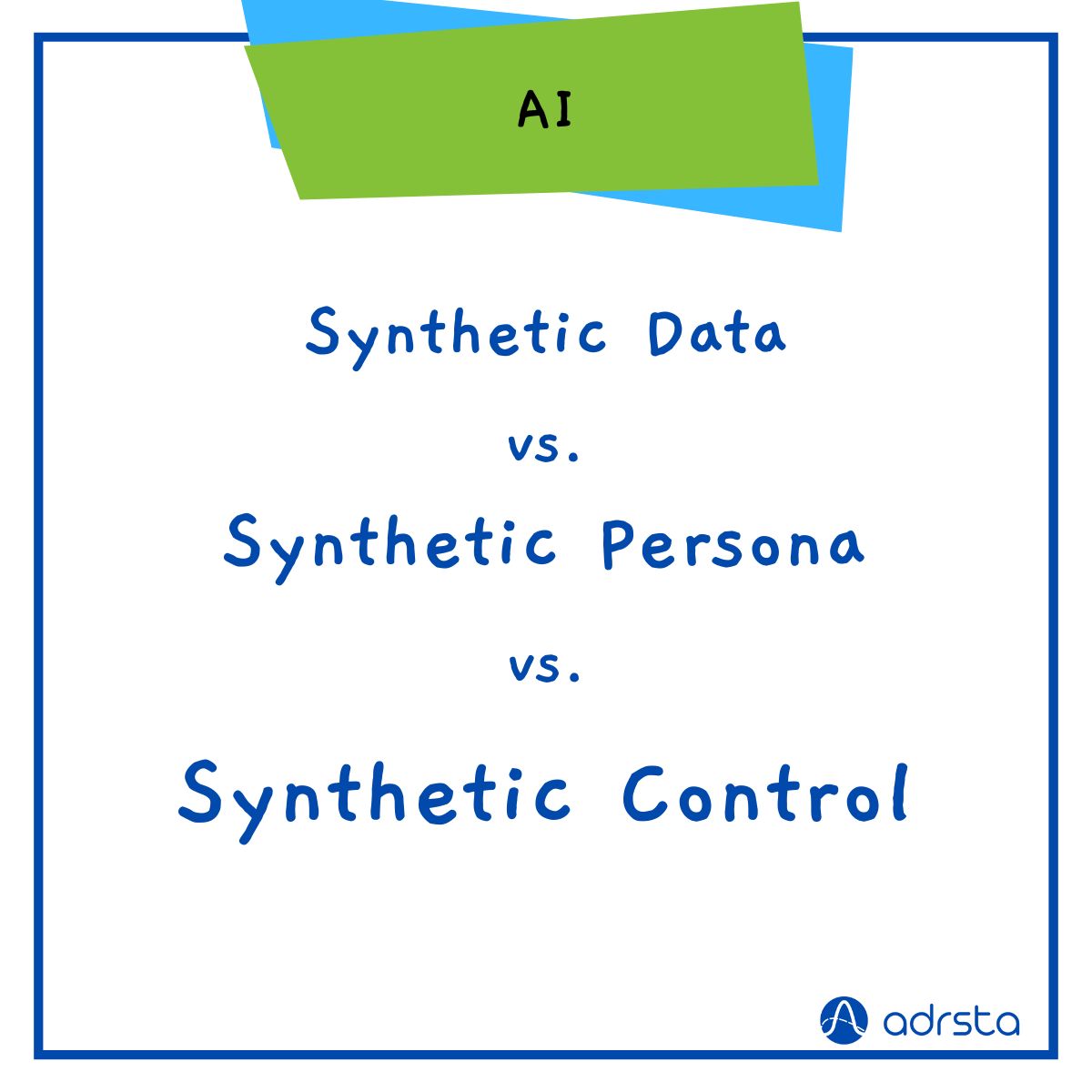
Demystifying Synthetic Control: #2 of N
In the world of data science and measurement, you'll often hear about different types of 'Synthetics' - the three most common being Synthetic Data, Synthetic Personas, and Synthetic Control. Despite sharing the word "synthetic," these are fundamentally different techniques with distinct applications. Let's break down what each one is, why it matters, and how it's built.Over the last couple of weeks, I've heard recurring questions from at least 4 customers and 3 investors about the fundamentals of Synthetic Control. This curiosity tells me it's time to address these head-on.
🪫 Synthetic DataWhat is it? Synthetic Data is artificially generated data that replicates the statistical properties of real-world datasets, enabling marketers to understand consumer preferences and test strategies when actual data is unavailable or restricted.Over the coming weeks, I'll be addressing these questions here on LinkedIn and on Adrsta AI's website, diving into both the fundamentals and real-world applications
Why does it matter? Synthetic Data is invaluable when facing data scarcity due to business constraints, privacy regulations, or tight timelines.
- How to build it? While rule-based augmentation works well for structured data, advanced techniques like Generative Adversarial Networks (GANs) and Variational Autoencoders (VAEs) are increasingly popular for creating realistic synthetic datasets by learning patterns from real-world data.
- Synthetic PersonasWhat is it? Synthetic Personas are AI-generated customer profiles that mimic the characteristics and behaviors of real users. These virtual representations enable businesses to simulate user interactions for research, testing, and personalization at scale.
- Why does it matter? Synthetic Personas help you build detailed user stories and ideal customer journeys, enabling personalized marketing offers that deliver superior consumer experiences.
- How to build it? The most effective approach leverages Large Language Models (LLMs) applied to your customer database. Smart prompting around demographics and psychographics creates distinct personas - essentially an evolved interpretation of traditional customer segmentation.
- Synthetic ControlWhat is it? Synthetic Control is a statistical method that creates a synthetic counterfactual by combining control units (markets, audiences, or products) to mirror the treated group's pre-intervention characteristics. This enables incrementality measurement without requiring expensive holdout groups
- Why does it matter? Traditional incrementality testing requires costly holdouts that fragmented ad systems often can't support. Synthetic Control creates virtual counterfactuals across geography, audience, and product dimensions, enabling always-on optimization and measurement - the foundation of effective Marketing Science
- How to build it? Multiple algorithms exist for Synthetic Control, with Ridge-based methods and Augmented Synthetic Control Methods (ASCM) being widely adopted. Additional techniques like clustering and bootstrapping enhance the robustness of the synthetic counterfactual
Adrsta AI's Marketing Science Agent (coming soon!) uses our Synthetic Control as its core engine to solve incrementality challenges without expensive holdouts
